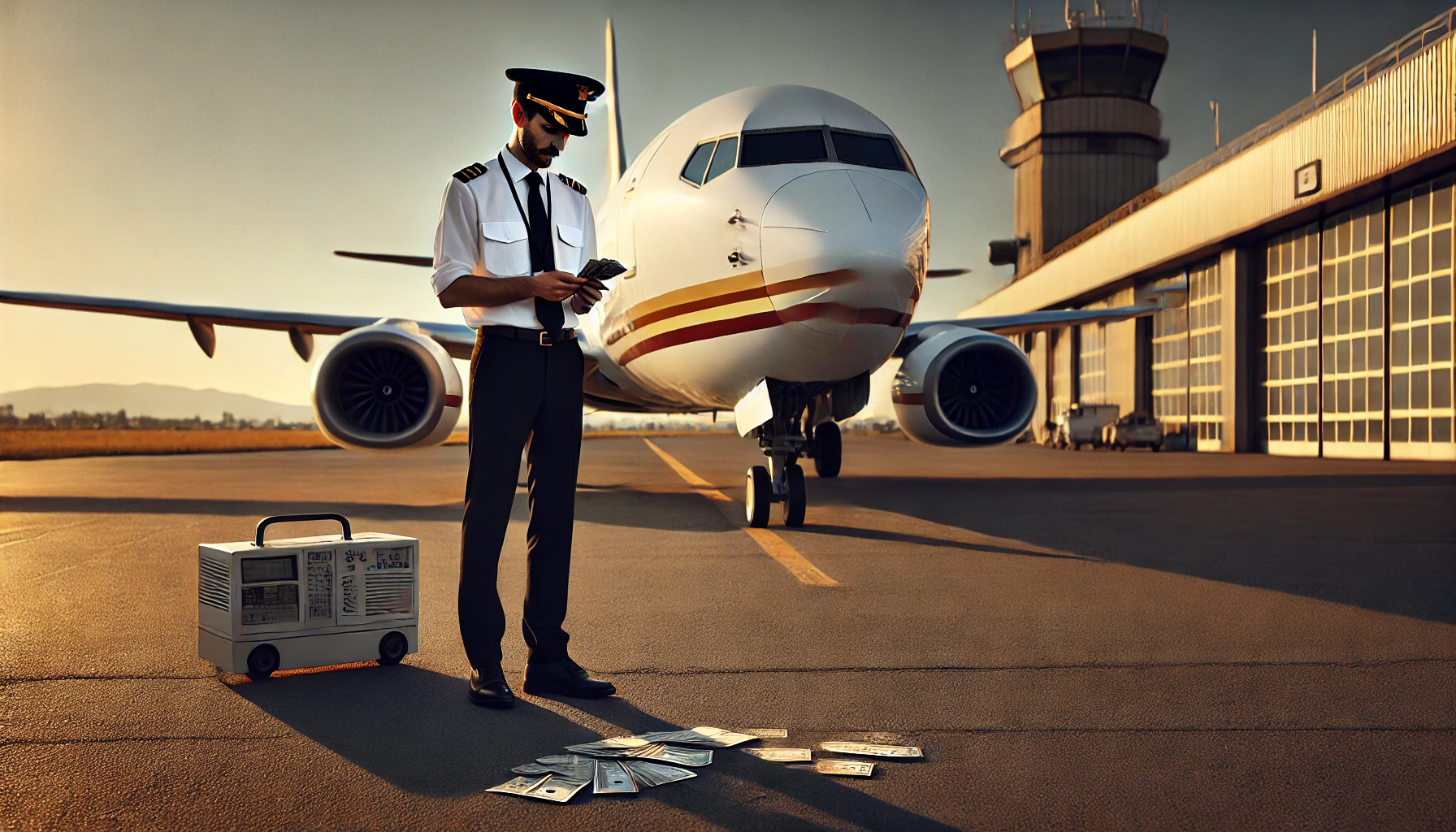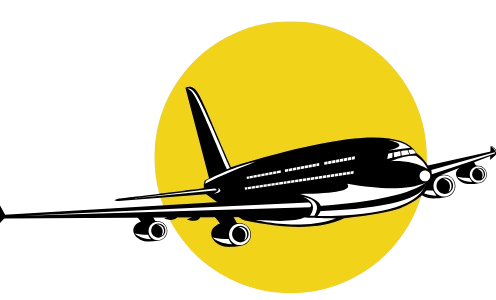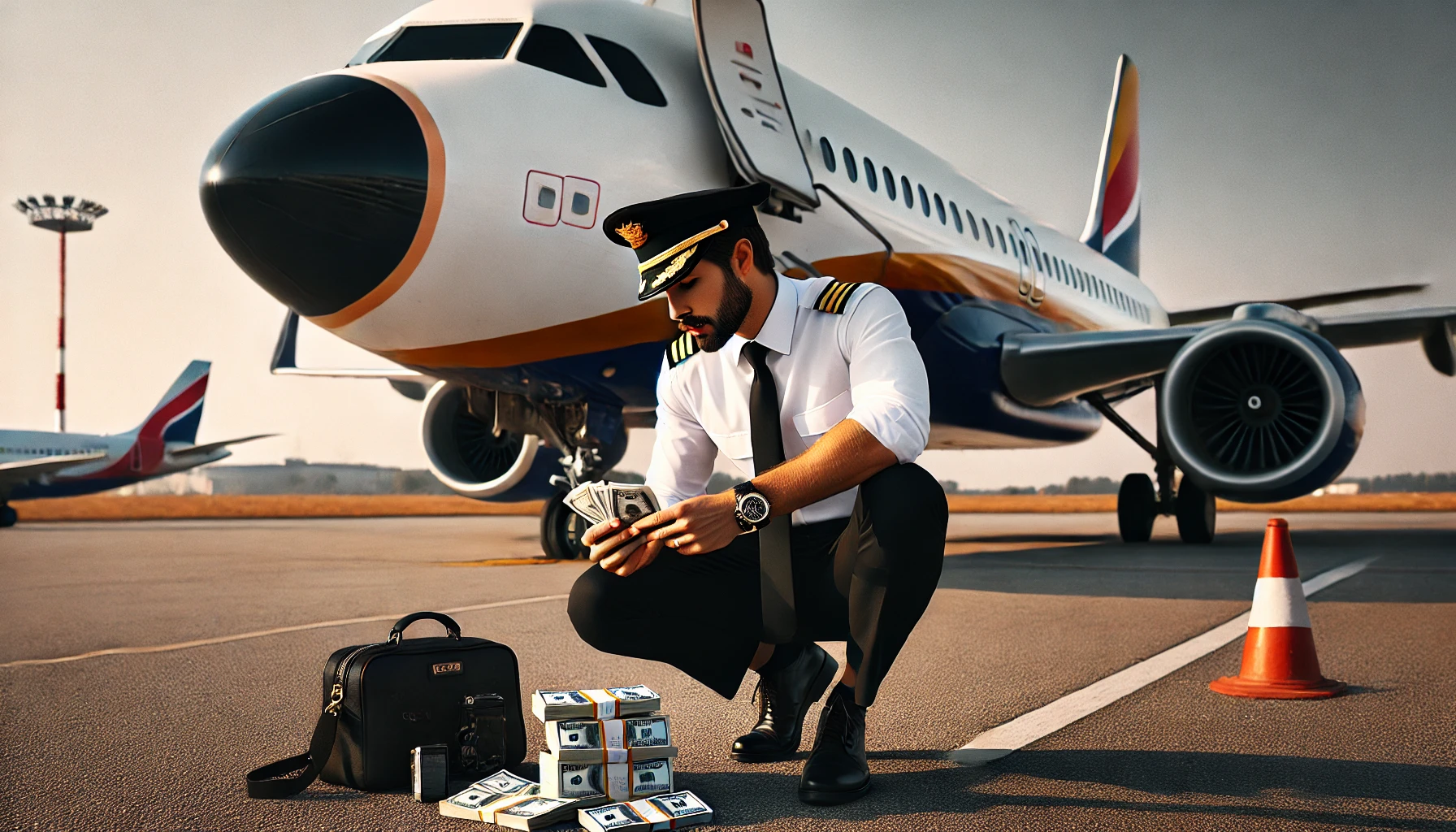What is the Reason for Getting a Private Pilot License?
Has there ever been a time where you wanted to fly in the sky controlled by you? Getting a private pilot license will help turn that dream into reality. The excitement that comes with flying paired with unmatched views offered by nature are only a couple of reasons why flying is so desirable to so many people. If that is not enough, flying helps save a lot of time and this is beneficial for both business and leisure purposes alike. Now you understand that getting a private pilot license has many benefits, the question that comes to mind is how to get that license. To be prepared properly you need to understand what is needed, the cost involved, along with exciting stories from those who already got their license. It is truly a wonderful experience and just thinking of it makes one motivated enough to get started.
Through this article we will help you understand the mileage you need to cover in order to be a full fledged pilot. Unlike commercial pilots, private pilots can fly without being restricted to operating on behalf of an airline. What is needed is a surrender of controls page along with a private pilot license to do any private related flying activities.
Getting a PPL requires completing multiple steps. First, you must find a flight school of your liking that is within your budget.
Then, you have to pass ground school that encompasses training in navigation and meteorology. After this, you are required to take flight training with an instructor.
After you are done accumulating the mandatory time in a flight training device or simulator, which is about 40 hours, you are prepared to take both the written and practical parts of the exam. Passing these exams means that soon you will be flying!

Requirements for Obtaining a Private Pilot License
In order to qualify for a private pilot license, there are age and health necessities that must be met. For starters, candidates must be at least 17 years of age. Also, undergoing a medical checkup is important. fitness to fly has to be determined by a certified aviation medical examiner.
You must understand the decrees of aviation as well as the related subjects. Though there are no degree expectations, being proficient in sciences and having a basic understanding in mathematics is very helpful.
The amount of flight training hours completed is also very important. The FAA requires that a pilot completes a minimum of 40 flight hours, though most people need anywhere from 60-70 flight hours to feel comfortable flying on their own.
It is equally important to have experience with certain maneuvers at this time. This practice helps the trainees gain skills that allow them to fly in real-life missions with varying degrees of complexity.
Age and Health Requirements
One of the fundamental things to keep in consideration when wanting to get a private pilot license are age and health status.
To start, you need to be at a minimum age of 17 before applying for this challenging certification. This ensures that a person is adult enough to be capable of making sound judgment in flying operations.
Equally as important, a medical exam has to be done by an FAA approved aviation medical examiner. They check your eyesight, hearing, and general physical health. These elements decide if you meet the condition to be a command of a flying vessel.
Don’t despair if you have some other health issues. A lot of people with certain conditions still qualify after special waivers or exemptions have been granted.
If you understand these conditions at the outset, it will enable you to become a licensed pilot, while taking care of everyone’s safety while flying.

Educational Requirements
To obtain a private pilot license, there is no need for a college degree, but some level of education is compulsory. The bare minimum is usually a high school diploma or equivalent.
A basic understanding of the aviation concepts can help ease the stress that comes from learning the new information while still undergoing the training program. Knowing the basics of math and physics will certainly help you ease into the training.
A number of flight schools provide a basic ground school which includes all the relevant areas of learning. Subjects consist of aircraft parts description, weather, and navigation.
A self-study approach is equally useful for potential pilots. There are many websites, as well as hardcopy literature, that provide necessary information for pilots.
If you are diligent with your studies, you will complete the requirements set for you in a quicker fashion and in a more pleasant way. Take advantage of this step in your journey in flying!
Flight Training Hours
Accumulating flight training hours is one of the activities that directly contributes to getting a private pilot certificate. These hours allow you to gain hands-on experience and develop essential flying skills.
The minimum requirement for training flight time set by the FAA is 40 hours. However, it is also normal for most student pilots to accumulate 60 to 70 hours on the aircraft before attempting the checkride. This time includes both dual instruction with an instructor and solo flights.
You will be practicing air work, primitive flying skills, and emergency drills. All of these help make every hour you fly easier and easier.
Selecting a flight school that fits your personal needs is very important for teaching you how to fly. Qualified instructors are able to give specific remarks throughout the lessons while making sure that safety is a number one priority.
Always remember that self-controlled learning can help increase retention and mastery of flying skills. Value every lesson; every take off brings you closer to achieving that coveted private pilot status.
Costs Related to Obtaining a Private Pilot Certificate
When taking into consideration a private pilot license, the costs can be quite extensive. The open enrollment costs for a school that teaches Correspondence Ground School and Flight Training ranges from $7,000 to $15,000. That figure covers basic tuition for ground school and flight training.
Next are the supplementary expenses such as the airplane rental fee. The standard renting rate ranges from 100 to 200 dollars an hour. Prices for airplane rentals often change depending on the region and make of the airplane.
The fee for the FAA written test is about $150 while the checkride can cost several hundred dollars depending on the instructor. You’ll want to keep in mind the various exam fees as well.
Remember to account for books and published materials along with online courses. Preparing thoroughly will require spending some money, which will prove useful down the line.
Looking at all of these various expenses ahead of time greatly helps figure out how to budget towards your goal of getting a private pilot license.
Expenses Overview
Figuring the overall expenses comes first when on the way to getting a private pilot license. Any private pilot student must remember this when planning their finances.
To begin, you will have to pay for flight training, which involves an hourly charge for aircraft rental, as well as instruction. In most cases, plan on spending about $150-$200 for each hour of training.
Next, don’t forget about learning books and other fundamental study aids. You will need at least $100, maximum $300 for these tools.
And what about exam fees? Most people usually expect to pay about $160 for the written test and over $500 for practical tests depending on where you live.
Now take into account add-ons like medical check ups or buying headsets and navigational instruments. They may increase your budget by some hundreds of dollars, yet they also are essential in the building of your career as a pilot. Primary factors define your financial limit for acquiring that highly sought after private pilot license.

Ways to Reduce Costs
Becoming a private pilot is an amazing journey, but managing the finances can be overwhelming for many students. Luckily, there are many methods to prevent excessive spending.
Think about opting a flying club if you are looking to save some money. Their offers are better than flight schools’ and you get to meet new people with the same passion as yours.
Another alternative for aspiring pilots is to apply for grants or scholarships. Some of them can be earned based on merit or need.
You can also use the internet or textbooks to study for the written exam instead of attending expensive ground school sessions.
And finally, off-demand times during instructors’ lessons in combination with maximal flexibility will take care of the money part of the issues.
The Wild Side of Piloting: What Private Pilots Go Through
All private pilots have their flying stories and how they began. The first time they flew alone and took off into the blue sky, it was a memory that they cherish.
Those that do not fly often enjoy the stories of seeing the sunrise while flying over landscapes. They appreciate the early light and how it paints the sky. Other pilots do enjoy spontaneous Sunday journeys to branded airfields with friends for a tasty brunch. No doubt about it, flying is an adventure.
There is a special bond that exists among fellow aviators. As they navigate life in the skies, pilots go through unique sets of experiences and hardships that form them as people and helps them create strong relationships in the long run.
For many, flying gives the sense of freedom—where cilvilian airliners can’t, or in untouched locations only reachable by plane. People enjoy the journey as much as actually getting from point A to B, and savor all the pleasurable moments in between too.
These personal experiences are what drive aspiring pilots to fly, and even seasoned aviators fuel for their next voyage into the lovely blue skies above.
Personal Stories from Licensed Pilots
Every pilot has a story. For some, it began with a passion of watching planes whiz by overhead when they were kids, while others were motivated by their family members. While every tale is different, each of them is equally captivating.
An example would be Sarah, who starred in her very first solo flight. She recalls every detail vividly—the exhilarating sense of nervousness that overcame her, when she was finally able to take off all by herself. The wheels on her aeroplane soared off into the air, and freedom poured over her in ways she had never experienced before.
Then there’s Mark, who shifted from office work and found joy in being a pilot. He deeply appreciated flying and gazing upon the incredible view of landscapes beneath him, all experiences no cubicle can offer.
These stories are built around more than just wins; they are filled with fervor and drama. Every flight presents cherished memories, friendships with other pilots, and tales that are worth narrating long after you touch down.
Advantages of Private Pilot License
A private pilot license gives you access to endless opportunities, which is exemplified by the three words: “imagine flying” – that’s just it; there’s no more sitting in friggin’ traffic or standing in endless security lines at airports.
With private licenses, you are permitted to go anywhere commercial flights do not service. Weekend breaks become spontaneous outings instead of thoroughly detailed plans.
Life flexibility is another incredible advantage. You make the schedule – plan where and when to fly and who to rely on to move based on your style. No one would love or have time to be waiting on others.
Moreover, personal advancement is aided through flying. It builds self-esteem because one acquires new competencies and tackles issues in the aircraft.
A view of the rest of the world comes from other pilots too, as there is a wide range of networking as experienced aviators are always willing to share their knowledge.
Nothing is as motivating as commanding your aircraft while experiencing constant freedom of space above incredible sceneries.
Getting Ready for the Written and Practical Exams
Putting together a study plan for both the written and practical exams can be intimidating, but it is very possible with a strategy. Create a study schedule that incorporates important elements such as aerodynamics, navigation, and law.
Consider employing different methods. While textbooks are a must, consider adding online courses and video tutorials for even better understanding. Downloading practice tests is an excellent way to get used to the exam setting and discover regions that need more focus.
For the practical test, having real practice is very important. Consistent flight practice will give you confidence in performing different maneuvers. Be sure to work closely with your instructor. They are the best people to guide you on how to improve your techniques.
Always remind yourself of the mental side. Make sure to establish some calming methods such as deep breaths or guided imagery techniques to help lessen the pressure prior to both examinations. Generally, a calmer mind tends to perform better.
References for Study
In relation to the written exam, I cannot emphasize enough how appropriate reference materials might bear great results. A wide variety of courses are available tailored to the needs of future airline personnel on the web. Aeronautical students may have their materials on FAA rules, physics, geometry, and even meteorology from sportygility and Gleim.
Traditional textbooks should not be ignored either! They contain references that are very important such as “The Pilot’s Handbook of Aeronautical Knowledge” that has all the relevant materials necessary for your examination and can be helpful in other stages of your flying career too.
You can also relate to the local ground school that you are a part of. Being in contact physically with your instructor and students can help you with the essential discussion of complicated topics that need explanation.
You may also consider other forms of mobile apps designed for pilots. These applications often incorporate practice quizzes and flashcard reinforcement, which is helpful for busy people on-the-go.
Tips For Success
Try to remain organized. Set up a timetable for studying that solves your work into smaller and easier tasks. That way you won’t get burned out and remain motivated.
Make use of multiple platforms. Don’t depend completely on one platform such as a textbook or an online course. Try videos and podcasts or even forums to get other viewpoints on the tough subjects.
Rehearse again and again. It can be practical flight exercises or written interrogations, repeating actions helps retain the information and build your confidence.
Network with your classmates. Sign up for local flying clubs or joining evenings in forums where you can meet and converse with potential pilot students like you.
Request feedback from trainers during your lesson. Constructive critiques are one of the best methods for improving.
Picture accomplishing your goals before taking an exam or a flight. You know positive imagery can help boost self-esteem and lessen anxiety, which leads to better performance.
Do not forget to take care of both physical and mental aspects of your well-being during the entire process. A healthy body leads to better outcomes during learning.
Ways To Get A Private Pilot License If You’re Not Able To Get A Private Pilot License
If attaining a Private Pilot License appears unlikely, you can look for other options that might be a better fit.
One of the most common is the Sport Pilot License which allows one to operate light-sport aircraft without needing the additional requirements that come with a Private License. Because the training is not as intense, it is great for hobbyists or those looking to fly for fun.
Alternatively, one may choose to obtain a Recreational Pilot License. The license comes with freedoms commonly associated with a Private license, but is also accompanied by restrictions on the types of flying activities undertaken along with the number of passengers.
This provides the option to choose between the two without worrying about too many trade offs, ensuring your vast majority of aviation goals and lifestyle fitting needs are met. Whether you are looking to fly for leisure or have a chance to take longer trips, there most definitely is an option available for you.




